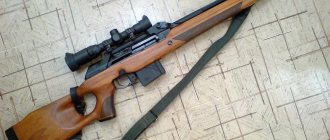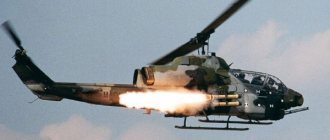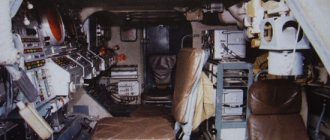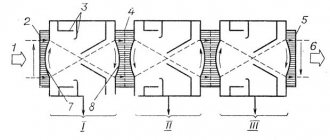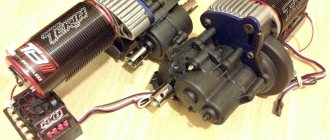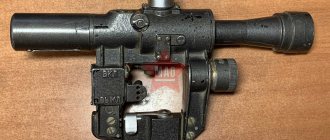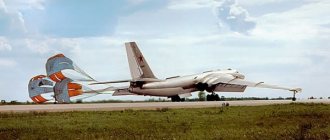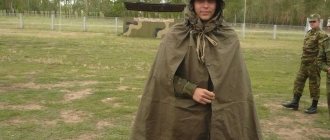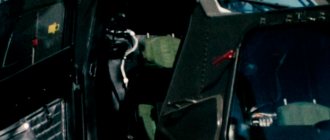Distinctive features of military ATVs
In order to adapt the ATV to military-tactical operations, it was subjected to significant changes and additions to the basic configuration. Improvements affected the chassis, exhaust system, and additional navigation and automatic fire systems were installed.
To increase cross-country ability and load capacity, a model with two rear axles was developed. This modification allows you to transport additional weapons, food, medicine and other supplies that may be needed during operations on the ATV.
The military ATV models mentioned above are the Tulchanka and PM – 500 6×4 all-terrain vehicles. Both devices are built on the basis of domestically produced ATVs, supplemented with appropriate equipment and subjected to some improvements.
The equipment has already been successfully tested at test sites several times, was criticized, but was nevertheless put into service due to the overwhelming majority of its positive qualities.
“Made with us” and on Yandex.Zen
It's hard to live for Pinocchio. This is part of an article ABOUT QUAD CYCLES, and not part of an article about “what kind of equipment do they ALL ride in the US Army.” Are you dumbfounded?
Listen, supposedly a military man, am I not poking you? Or the word politeness went over your ears, just like the fact that when they say “the US army has Polaris ATVs,” they say exactly that, and not “the modern US military rides Polaris ATVs.” Or is Russian not quite your native language? Then oh.
And then go drive off-road excavators. Before you can point out the next obvious thing - the specialization of an excavator is not in transporting something in off-road conditions. This is precisely the specialization of the BMD.
Hmmm... The insanity grew stronger, the trees bent. I'll tell you a terrible secret. The BMD specializes in combat operations deep behind enemy lines. It was precisely from these requirements that it was constructed. Hence the differences from the BMP. To put it very simply, for those who do not understand military equipment at all, an infantry fighting vehicle is the same infantry fighting vehicle, only lightened to the maximum so that it can be thrown from above. Is it clear now? In general, the main task of the BMP family (which includes BMDs) is to support infantry in battle. Hence the name infantry (landing) combat vehicle. And transportation is an armored personnel carrier (armored TRANSPORTER) and MTLB (multi-purpose light armored transporter). Here are armored personnel carriers and MTLBs, which can easily be classified as all-terrain vehicles. And the BMD... well, if only in company with an excavator and a camel)
Tighten your optic nerve - “For assembling weapons and military equipment, conducting reconnaissance, escorting convoys, patrolling”© Another finger-hand.
Yes, it’s better to beat your head against the wall, maybe it will clear up a little. My dear... What the hell is reconnaissance, on a unit that can be heard 2 km away... What the hell is patrolling when this miracle needs to be deployed for half a day before you drive the attacker into the firing sector? especially for the military. When organizing an ambush, no one digs trenches right on the road. Positions are taken within 50-200 meters from the roadside. Your patrolman will not be able to detect it, well, he will not drive a square 200 meters from the road anywhere except the steppe and desert, nor will he open fire. By the time this miracle of the automobile industry unfolds, the driver will already be communicating with the apostles. If you get into an ambush, the reaction time is seconds, not minutes.
But what is clear from the photo is that the quad is used as an ass transport for commanders. Most likely the platoon level is a company, and a light tractor for the same unit. Beauty, no doubt. Just to explain to the soldiers that today, tomorrow and for 2-3 months they won’t eat, because it’s minus 30, and the quad is laid up, I would send you. Well, or as an option, you should lead the bayonet force, because the driver of the quad died of frostbite, and the cartridges will be closer to spring. They explained it to you in Russian. We have 3 points for using quads. And then 2 of them are a stretch. To drive quads in the mountains... for reconnaissance... You have to be a complete scumbag.
In general, we learn materiel. To not know why the BMD was created, and to teach others... It’s an incredible disgrace.
Oh yes. Carrying loads for installation, on a quadra, in the same -30, would have put you in prison. To enlighten the brain.
Military ATV "Tulchanka"
The Tulchanka model military ATV is equipped with a four-stroke single-cylinder power unit with a displacement of 600 cubic meters. see. The frame of the all-terrain vehicle is made as standard for this type of equipment from hollow pipes, for the manufacture of which steel with special additives is used. The suspension is built using reinforced shock absorbers, allowing for complete control over the equipment while moving over rough terrain.
The transmission distributes torque to all four wheels, with the ability to switch drive modes. This approach ensures more efficient use of the engine in areas of varying complexity.
The all-terrain vehicle is equipped exclusively with disc brakes with a hydraulic control system. This ensures safety and maneuverability when driving.
Among the additional equipment, it is worth noting the satellite navigation system integrated into the ATV, which provides all the necessary information about the location in space and helps to follow given routes.
The all-terrain vehicle is armed with a machine gun with a high rate of fire and lethal power. Constructive placement of weapons allows you to fight both on the move and while in cover.
Military ATV PM – 500 6×4
Another popular military ATV model is the PM-500 6×4, which is also available in a 4×4 modification.
The main feature of the 6x4 model is the presence of an additional axle at the rear of the chassis. This design feature made it possible to increase the cross-country ability of the all-terrain vehicle, make the rear gunner’s landing more convenient for firing, and significantly increase the carrying capacity. The presence of a cargo compartment allows you to load useful weight on equipment that is preparing for long deployments behind enemy lines.
The device is equipped with a single-cylinder four-stroke engine with a displacement of 500 cc. see. The transmission ensures the transmission of torque to the rear two axles. The suspension and braking system are made as standard, and have been modified only in terms of load capacity.
Military ATV review!
ATV AM-1
For the first time, AM-1 all-terrain vehicles, produced at the Rybinsk enterprise “Russian Mechanics”, and modified to meet army needs and requirements, took part in the columns of military equipment.
The AM-1 ATV is developed on the basis of the civilian model RM 500-2. This car has all-wheel drive and locking, wheels on alloy wheels, an electric winch, rear-view mirrors, luggage racks, and a tow bar. At the same time, in comparison with the PM 500 model, the frame design has been optimized, a comfortable two-level seat, sealed boxes under the luggage platforms have been installed, impact-resistant plastic has been used, arch extensions, a full set of lighting equipment, and basic underbody protection.
The PM 500-2 is designed for driving on any type of terrain. The all-terrain vehicle has improved ergonomics, is lightweight and easy to operate, while maintaining off-road characteristics. AM-1, of course, differs from serial “civilian” ATVs. It has a “khaki” color, a specially designed trunk designed for mounting weapons, a puncture-proof fuel tank (a self-tightening coating allows, in the event of a puncture, to close the bullet hole within 10-15 seconds, after which the ATV will continue to move, retaining the fuel necessary for this ). The elements of the supporting structure of the frame were strengthened, which resulted in an increase in the overall load-carrying capacity of the ATV. The levers have been strengthened to ensure cross-country ability. The load capacity of the trunk is designed to be at least 150 kg. Plus the electric winch we mentioned.
The army AM-1 is intended primarily for conducting patrol and reconnaissance operations, raids and search and rescue operations carried out in different climatic conditions. The all-terrain vehicle began to arrive en masse in the second half of last year. The Airborne Forces were the first to receive it, and only after testing by the “winged infantry” did the ATV begin to enter service with other army special forces, including higher combined arms command schools.
Even the Oboronles fire-chemical station of the Russian Ministry of Defense purchased a small batch of AM-1. Its officers are already using Rybinsk ATVs to move mobile patrol groups, which will ensure reconnaissance of fires in forests and extinguishing the fire before the arrival of the main forces. The high cross-country ability of all-terrain vehicles allows for operational control of fire conditions, including in remote and hard-to-reach areas. Oboronlesovsky ATVs are equipped with forest fire equipment and inventory. In particular, they are equipped with a water tank with a small motor pump and a fire hose, a chainsaw and an entrenching tool. This allows the crew, when patrolling the territory in the event of a fire, to carry out preventive measures to prevent the spread of fire before the arrival of the main units. The military speaks about their ATVs as follows: “This is a modern technology that has proven itself in field conditions and is actively used in exercises and combat operations during raids, reconnaissance, and search and rescue operations. There are no cases of mass failure of any AM-1 units yet.”
Tactical and technical characteristics of AM-1:
Dimensions: 2565x1245x1645 mm Wheelbase - 1490 mm Weight - 420 kg Engine - petrol 4-stroke, 1-cylinder, 4-valve, liquid cooling Engine capacity - 493 cc. cm Maximum power - 38 hp Maximum speed - up to 80 km/h Starting system - electric, manual starter Transmission - variator Fuel tank capacity - 20 l Battery - 12 V/20 Ah Number of seats - 2 Gears: front with high and low range, neutral, rear Tires: front - 26 x 8 - 14 4PR, rear - 26 x 10 - 14 4PR Brakes: front - hydraulic disc, rear - disc, transmission, hydraulic
How a Tula special forces soldier transferred the airborne forces to ATVs
On the 20th of November, paratroopers from the Tula 106th Airborne Division conducted joint exercises with the Serbian military. The Tula guardsmen brought with them seven airborne combat vehicles - BMD-2, 2 armored personnel carriers and 15 ATVs.
These ATVs became a sensation already on the first day of our paratroopers’ stay on Serbian soil!
Combat ATVs appeared thanks to the initiative of the military and the prompt reaction of the management of the branch of JSC KBP - TsKIB SOO, and the joint work of designers and testers.
Evgeniy Kelpsh
One of the developers of “Tulchanka” is a veteran of special forces units, now working in the Tula TsKIB Evgeniy Kelpsh. He told Myslo about the secrets of the Tula cart.
— Why did this car cause such a sensation?
— Because this is the first innovation of this kind in Russia. In fact, both combat motorcycles and buggies have been used all over the world for quite a long time. Let's even remember the motorcycles that were used during World War II.
And in the USSR, reconnaissance units had such vehicles in service, but then they were forgotten about, and completely.
In the course of modern wars (in particular hybrid ones), when it is not a huge army fighting against another, when there is no front, but combat operations are carried out throughout the entire territory of the conflict zone, such small-scale mechanized transport combat vehicles have proven to be very effective and in demand.
All this together is called “means of mechanization of the combat support process.” These ATVs can be used as highly mobile firing points, as vehicles, as ambulances, and as cargo transport for delivering, for example, ammunition. Why did we choose ATVs and not buggies, for example? Yes, because they are more passable and less noticeable.
At 500 meters in the distance it can no longer be seen or heard, and it is almost impossible to find it in the forest.
— How did the idea of combining an ATV with combat technologies come about? How did the tandem of Bryansk, which manufactures ATVs, and Tula, which equips them, come about?
— The idea has been in the air for a long time. We, in principle, did not invent anything new, we simply repeated existing examples, adding to this our vision, with our own approaches. Bryansk is the first production facility that produces our entire ATV; in addition to plastic, there are only Russian components. The engines, transmission, and frame elements are all ours. Despite the sanctions, they do not depend on them, which makes this manufacturer the most reliable partner. In addition, as a rule, ATVs are an additional production for such factories, but for the guys from Bryansk this is the main production: ATVs and snowmobiles. Therefore, they currently occupy a leading position.
Our paratroopers have long needed light equipment for reconnaissance.
They saw these ATVs first, and then these ATVs found us. That is, they came to us and asked if it was possible to put weapons on them. And this is what actually happened.
— “Tulchanka” has attracted interest abroad, but is it possible to produce a military ATV in large volumes?
— I think so, because it is more profitable for non-dollar countries to buy equipment from us. We have a huge competitive advantage. The price of a combat ATV is about 200 thousand rubles.
— What equipment is installed on Tulchanka?
— The ATV can have machine guns and grenade launchers. We made a “body kit”, and you can put almost any small arms there. He passed the test successfully. The car is quite peppy and holds a 45 degree climb.
— Why did you decide to call it “Tulchanka”?
— I have always been interested in what the girls who live in Tula are called. Tula does not sound very nice. I preferred to call them “sleeves”. But then somehow “Tulchanka” came to mind. When Deputy Prime Minister Dmitry Rogozin (an avid motorcyclist, by the way) came to us, he approved this name. On September 17, we showed ATVs to Prime Minister Dmitry Medvedev, when he saw them, he exclaimed: “Oh! Tachanka-Tulchanka.”
So now the girls of our city, by decision of the Russian government, are called Tula girls.
— Bryansk colleagues weren’t offended?
- No, because thanks to us they received a large order from the Ministry of Defense.
— How is the driver protected in an ATV?
- Well... you still have to try to get into it! On asphalt it reaches speeds of up to 100 km/h, and on intersections – 60 km/h. Secondly, we assume that this is a special forces vehicle, and the drivers will not take on massive fire. And the protective equipment provided is those that are on the driver.
We are also considering a modification of this machine; we plan to install a Kevlar blanket (anti-fragmentation) there.
— What other developments of the Tula TsKIB are being prepared for presentation in the near future?
— In 2015, we plan to work quite seriously with our rifles. Our guys, who were on training exercises in Serbia, fired at Serbian fighters. This is provided that they were allowed to use only their own rifles. But the Serbs are very serious guys! This suggests that our rifle is correct. It will go into production next year.
This is know-how, nothing like this has ever been produced in Russia.
We plan to occupy the niche in which Ecuracy International and Steer-Manlicher are now located, because at one time the security forces purchased from them. Now there are no such purchases, and therefore we have prepared a rifle that will occupy this niche at a decent level.
— So we can say that the market is reoriented towards domestic production?
- Exactly. We must make any equipment ourselves so as not to depend on anyone. The need for this has been demonstrated by recent events and the sanctions adopted. Moreover, now we are faced with the task of making on our own what we previously purchased from abroad. But this task is doable and I think we can handle it.
Myslo dossier
Evgeniy Valentinovich Kelpsh Born on September 11, 1967 Advisor to the director of the branch of OJSC KBP-TsKIB SOO, veteran of the Special Forces Center of the FSB of the Russian Federation, combatant Family: married, 4 children Hobbies: shooting, parachuting (parachutist instructor) Favorite place in Tula: TsKIB, Tula Kremlin
